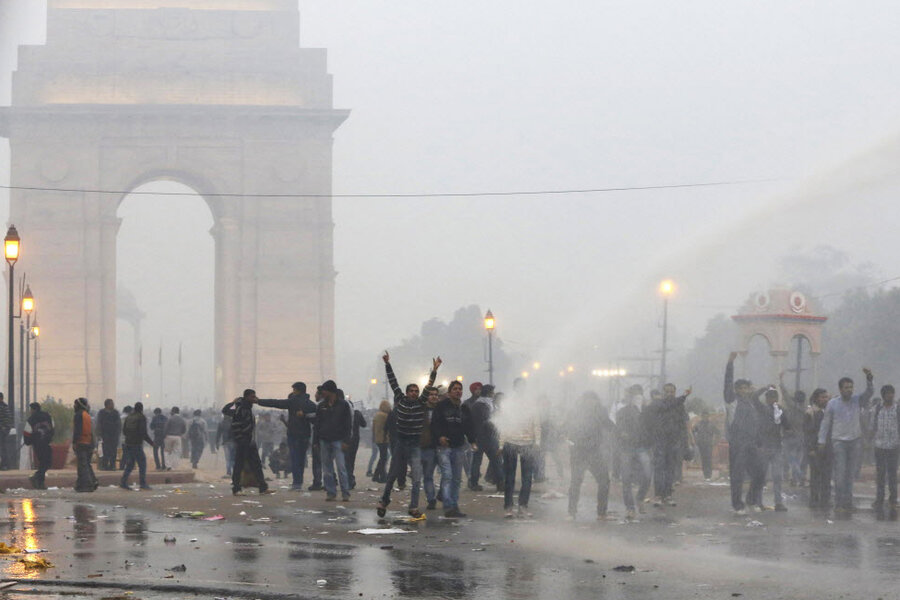Thousands protesting gang rape clash with Indian police
Loading...
| New Delhi
Police in India's capital used tear gas and water cannons for a second day Sunday in a high-security zone to break up protests by thousands of people demonstrating against the gang rape and beating of a 23-year-old student on a bus.
Police chased angry protesters with batons some of whom fought pitched battles with steel rods and rocks as they tried to get past steel barricades and a wall created by hundreds of policemen to reach the president's mansion to present their demands. "We want justice," they shouted.
Television footage showed that some protesters were injured in the clashes.
The protesters made bonfires and damaged cars and police vehicles.
Police blamed the violence on hooligans. "A peaceful protest by people has been taken over by hooligans," Dharmendra Kumar, a senior police officer, told reporters. He urged people to go home to help police deal with the trouble makers.
The demonstrations continued Sunday despite Home Minister Sushilkumar Shinde promising to consider their main demand for death penalties for all six suspects who have been arrested by police following the Dec. 16 attack.
Shinde said Saturday night that the government was taking steps to better ensure the safety of women.
A group of protesters met Sonia Gandhi, the governing Congress party chief, and her son and lawmaker Rahul Gandhi, on Sunday and demanded a speedy trial of the suspects.
Popular yoga guru Babar Ramdev stood on the roof of a bus and pledged support to the protesters. "The government must set up fast-track courts to punish the offenders in rape attacks," he said.
The attack one week ago has sparked days of protests across the country. The victim is recovering from injuries in a New Delhi government hospital but is still in critical condition.
After battling the protesters throughout the day on Saturday, authorities early on Sunday banned their entry into the high-security zone, which also houses the offices of the prime minister and defense, home and external affairs ministries. Police evicted dozens of protesters who had spent the night there.
However, as groups of protesters marched through the streets of New Delhi and began converging on the high-security area on Sunday, authorities withdrew the ban on the assembly of more than five people there. But it set up barricades to keep them away from the president's residence.
Protesters tried to break the police cordon repeatedly by hurling stones and water bottles and pressing against the steel barricades. Policemen responded by firing tear gas and using water cannons against them. The battle continued throughout the day.







